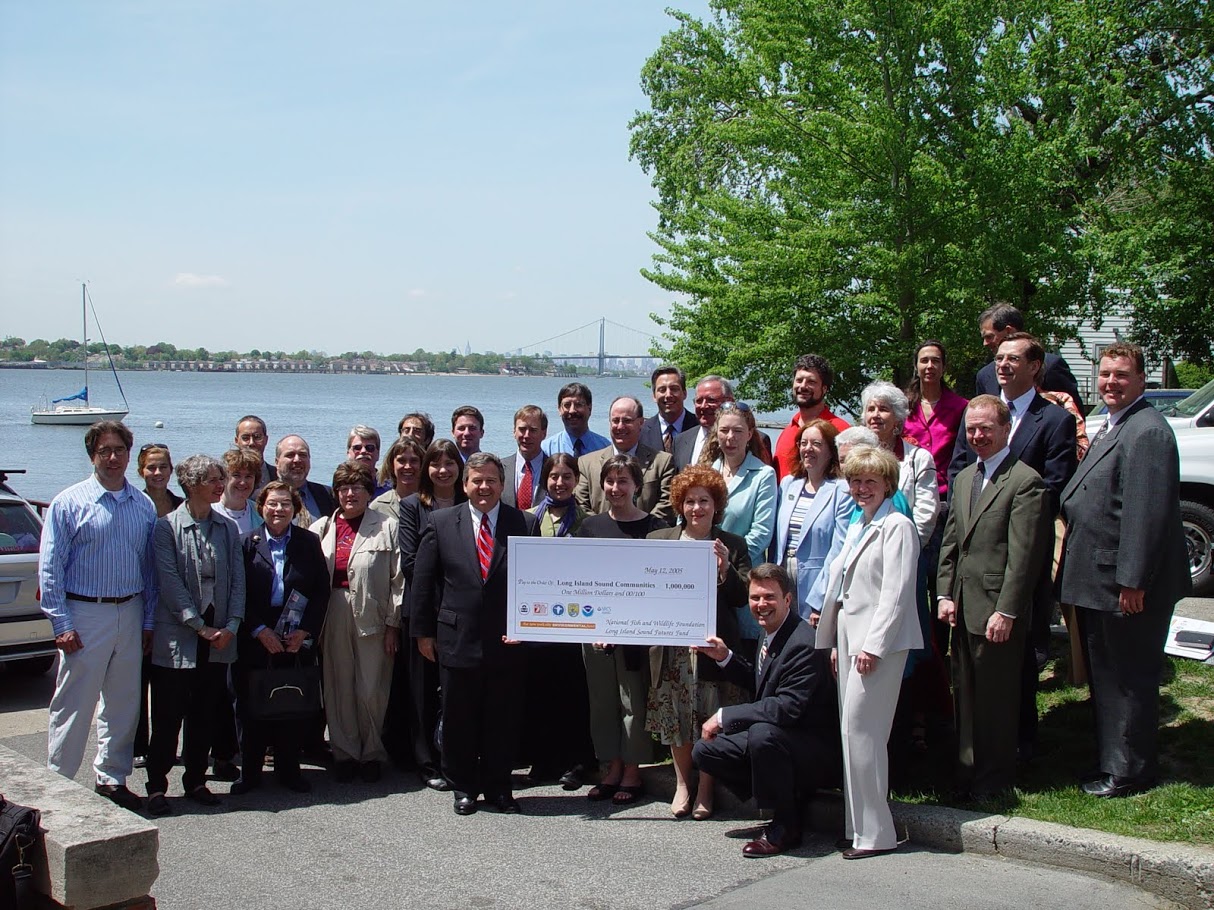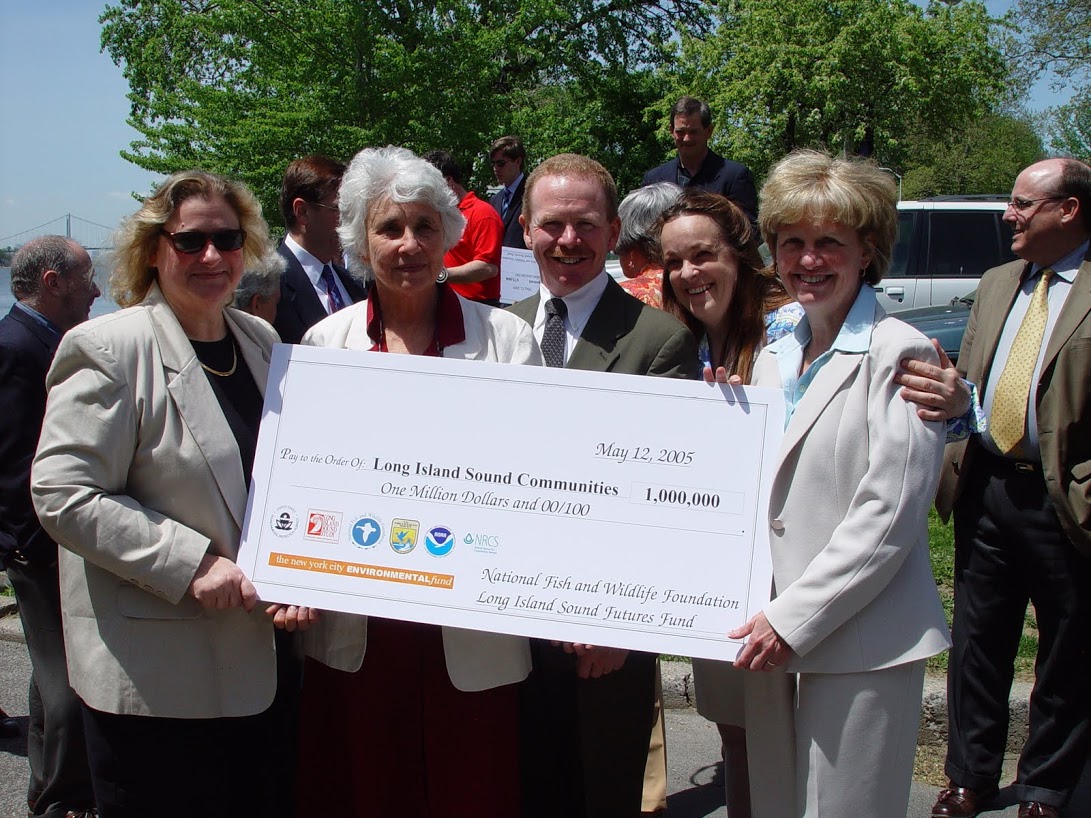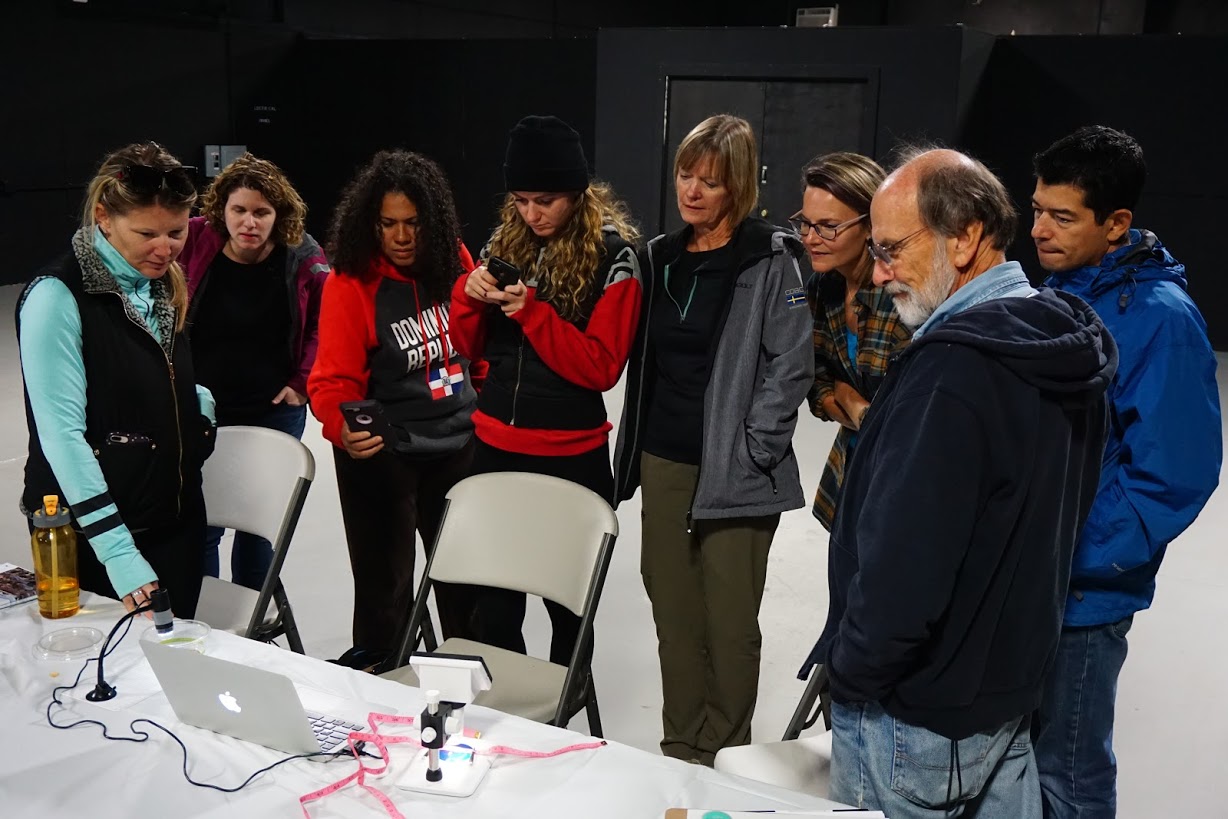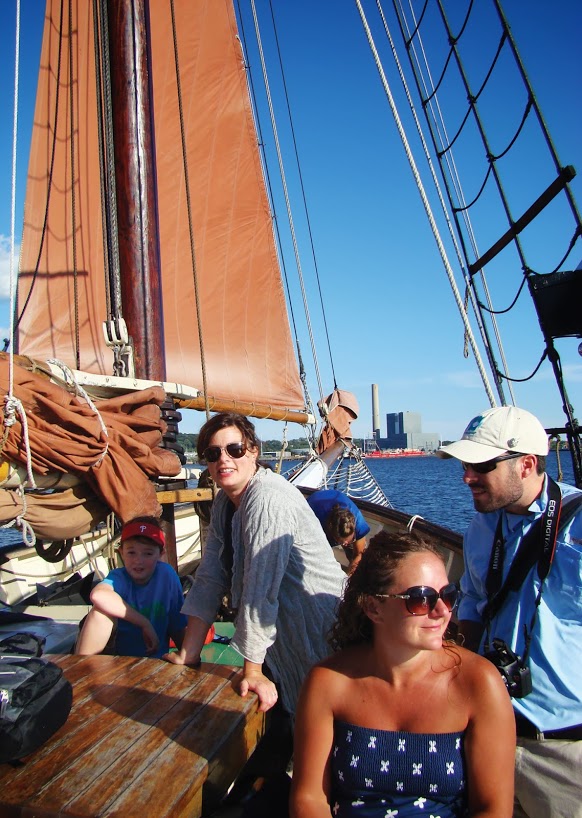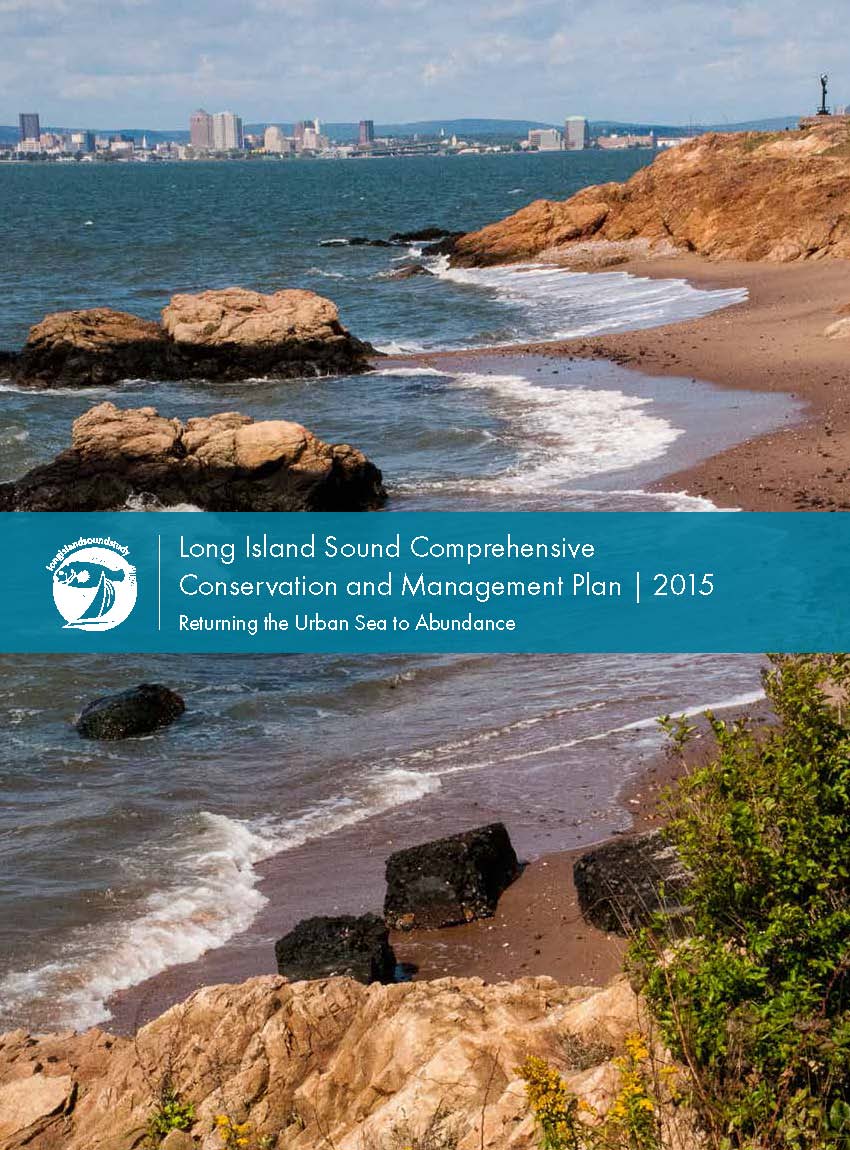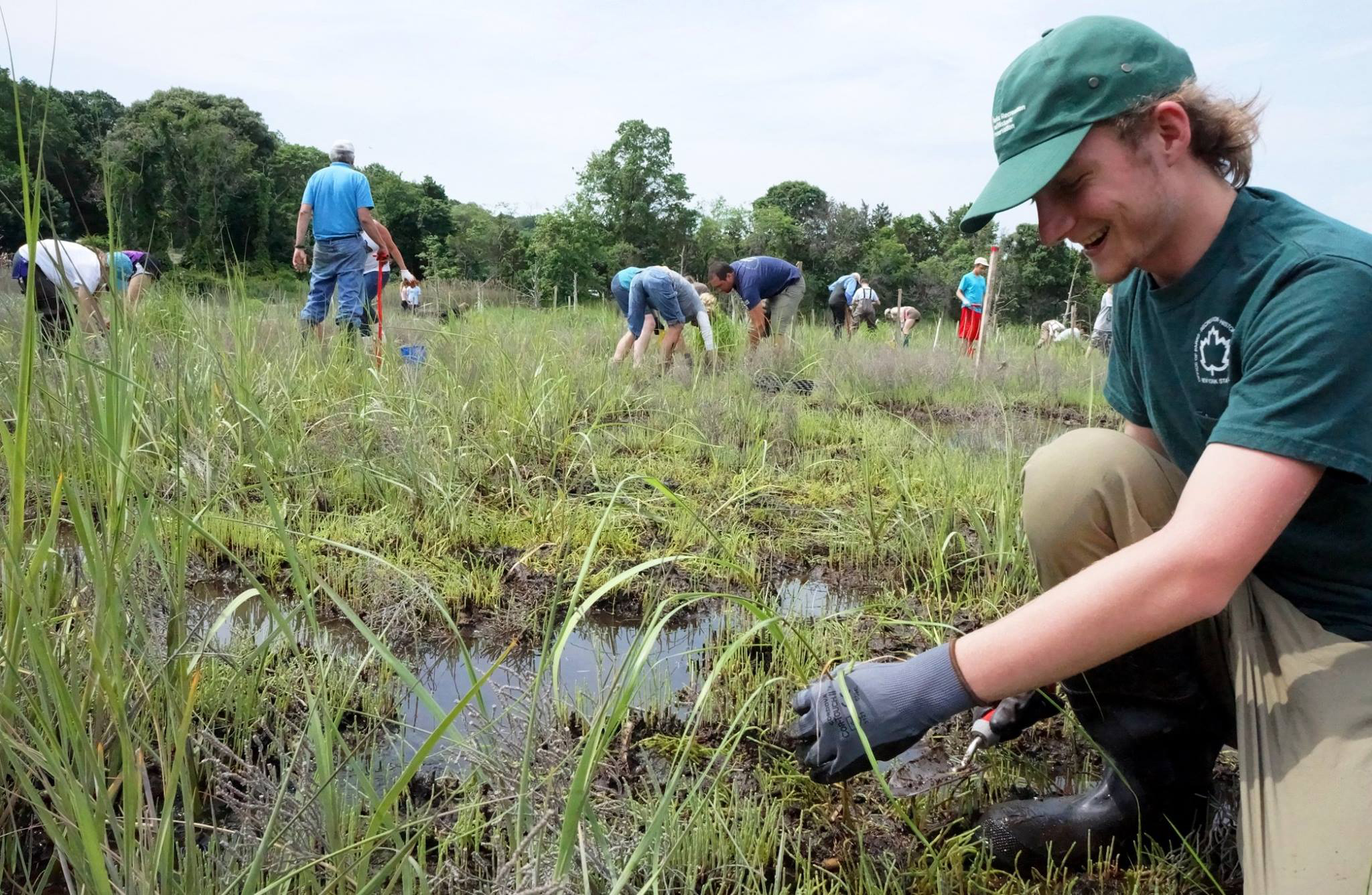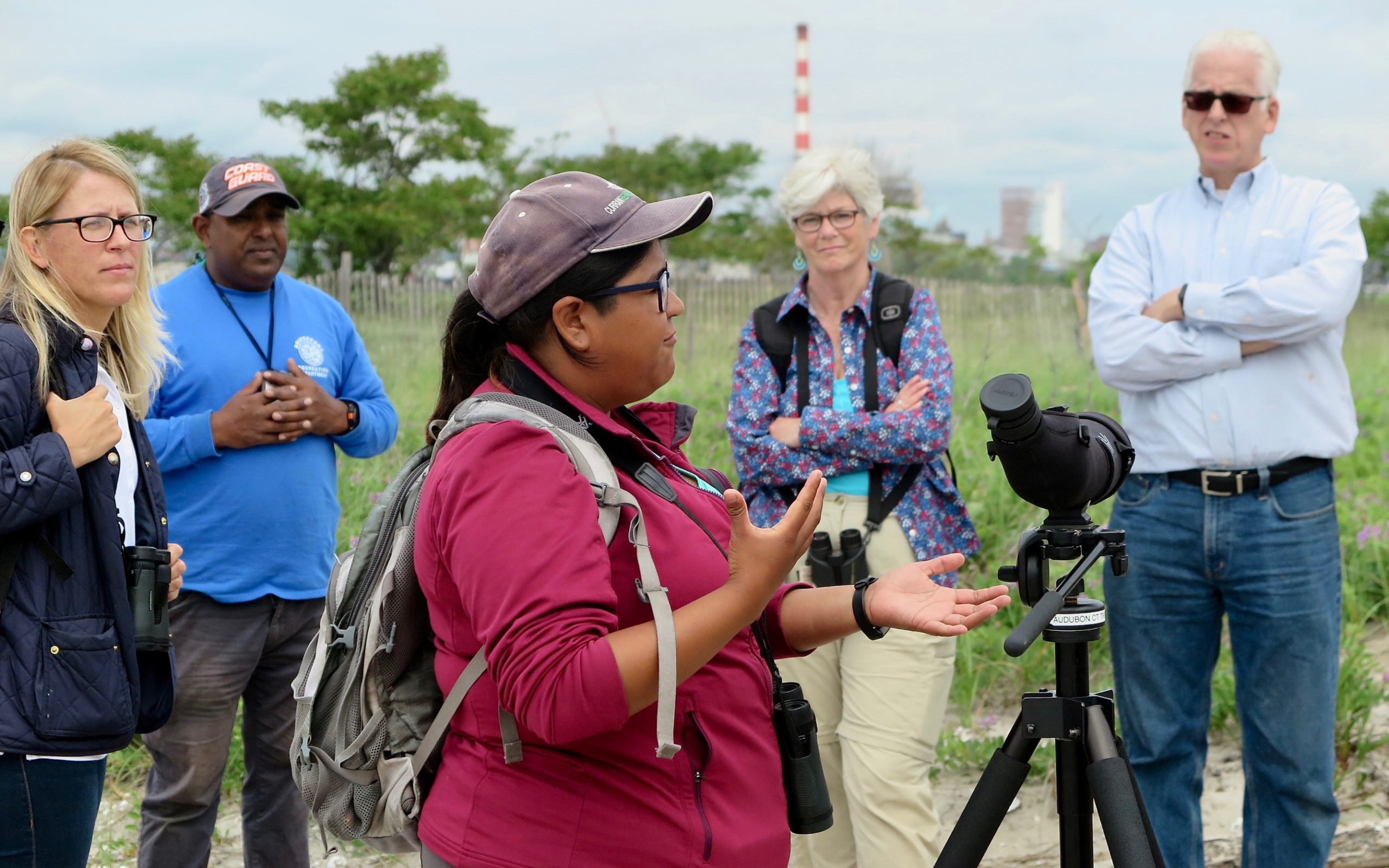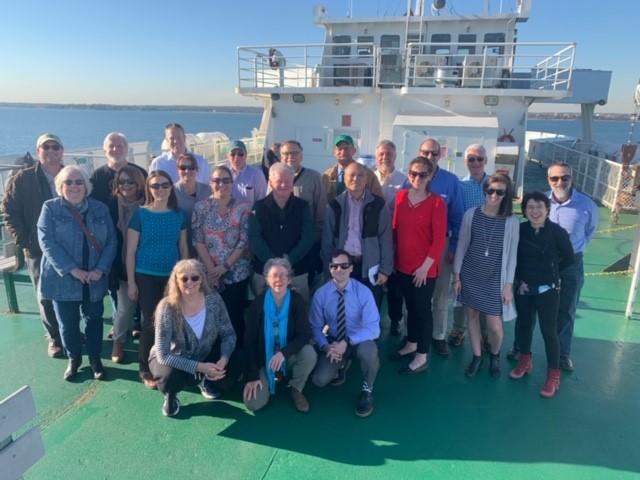LISS Celebrates Earth Day and its Own Anniversaries
This year marks the 50th anniversary of Earth Day and the US Environmental Protection Agency. It also is the 35th anniversary of the Long Island Sound Study, the partnership of local, state, and federal governments with industry, universities, community groups, and citizens to restore and protect Long Island Sound.

What influenced the first Earth Day celebration 50 years ago? Historians look back to the 1960s when Americans in larger numbers were beginning to become aware of the dangers of pollution and toxic chemicals to their environment. In the beginning of the decade Rachel Carson’s book Silent Spring brought attention to the pesticide DDT threatening the extinction of the Bald Eagle. Later on, Americans were expressing their concerns about a range of environmental threats, from oil spills fouling beaches in California to the effects of leaded gasoline on human health, particularly in urban areas. According to Earth Day Network, groups that had been fighting for a better environment on individual issues came together to attend rallies in the first Earth Day celebration. “On April 22, 1970, 20 million Americans — at the time, 10 percent of the total population of the United States — took to the streets, parks and auditoriums to demonstrate for a healthy, sustainable environment in massive coast-to-coast rallies,” according to the Earth Day website. The bipartisan event – it was co-sponsored by a Democratic U.S. Senator and a Republican Congressman – was attended by Americans of all races, ages, and incomes. It also was credited with helping to launch the US Environmental Protection Agency in December of that year. The new EPA consolidated many environmental responsibilities of the federal government under one agency. Soon Earth Day and the founding of EPA were followed by passage of landmark environmental legislation, including the Clean Air, Clean Water, and Endangered Species Acts.
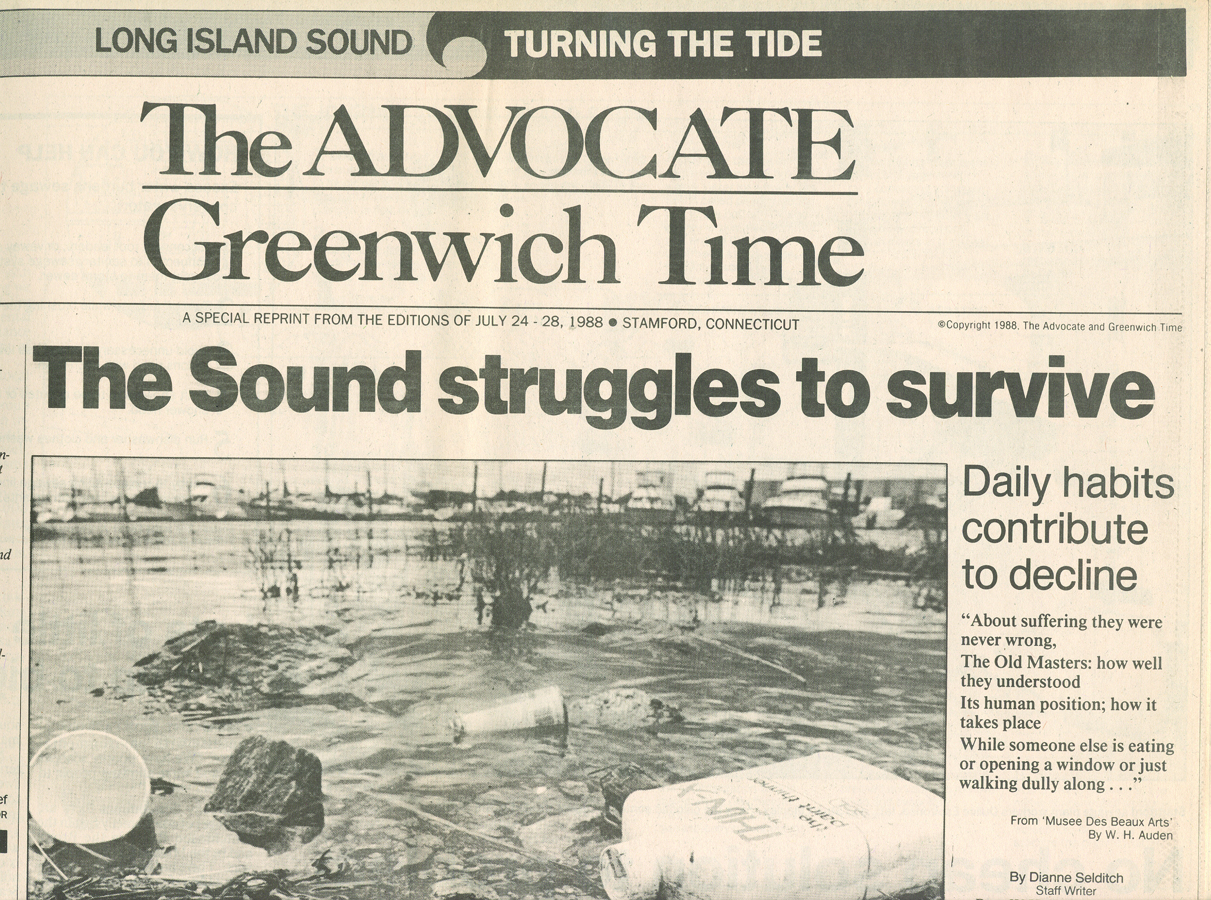
Those efforts continued into the 1980s as communities worked through nonpartisan efforts to restore and protect their local environments with help from local, state, and federal governments. In 1987, Congress amended the Clean Water Act to authorize the National Estuary Program to specifically deal with the environmental threats to America’s estuaries, the coastal environments where salty ocean water mixes with freshwater from upland rivers and streams. The Long Island Sound Study was one of four inaugural estuary programs, but Congress actually started funding the Long Island Sound Study back in 1985 to study pollution problems and identify solutions.
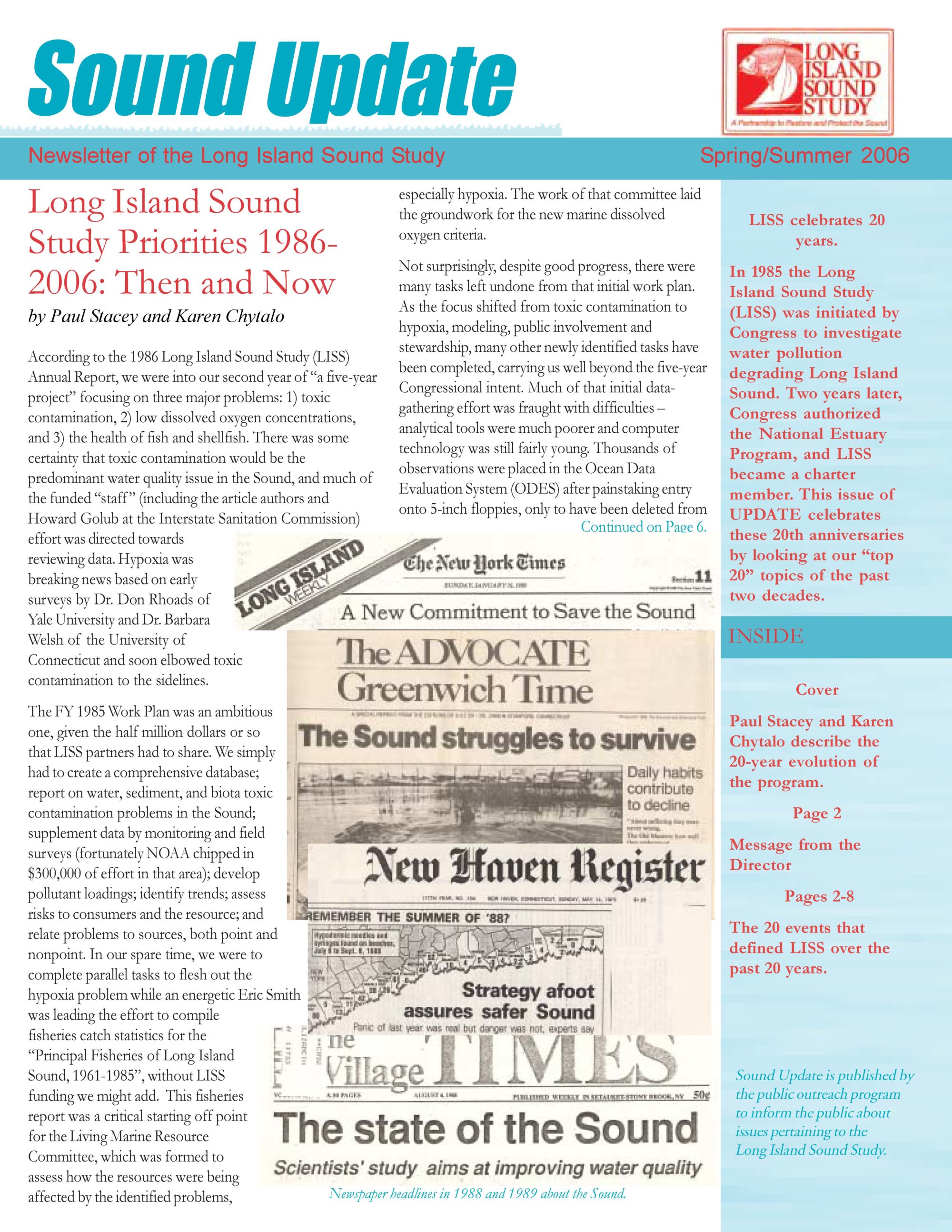
Fifteen years ago, the Long Island Sound Study (LISS) commemorated the 20th anniversary of its formation with a special edition of its Sound Update newsletter highlighting 20 topics over 20 years. The issue remains a good read to understanding the history of Long Island Sound study in its early years. With the exception of the Sound Update annual report, the newsletter is no longer in print. That doesn’t mean a new anniversary can’t be recognized and the many new achievements that have occurred over the last decade and a half highlighted.
Below is a list of 15 additional topics over the past 15 years to commemorate and celebrate. A 16th topic was added to wish continued good fortune in restoration efforts. A slide show highlights some of the topics. Happy 35th and 50th!
- LISS Launches Grant Program to Fund the Sound’s Restoration (2005): The EPA, through the Long Island Sound Study, and partners that included the National Fish and Wildlife Foundation and the US Fish and Wildlife Service, awarded $1 million in grants to 28 local community organizations and governments through the newly-created Long Island Sound Futures Fund. Since 2005, LISFF has invested $22 million in 451 projects to help restore and protect Long Island Sound through its Comprehensive Conservation and Management Plan (CCMP). The grant program has generated an additional $39 million in grantee match, for a total conservation impact of $62 million for regional and local projects. The projects have reconnected 176 miles of river for fish passage, restored 1,114 acres of critical fish and wildlife habitat and open space, treated 212 million gallons of stormwater pollution, and educated and engaged 4.9 million people in protection and restoration of the Sound. The latest call for proposals was announced in March 2020 with the program expecting to distribute its largest amount ever – around $3 million.
- Long Island Sound Cable Fund Authorized to Explore the Sound’s Bottom Waters (2006): The Long Island Sound Study Policy Committee signed a Memorandum of Understanding to formally establish a framework to distribute a $6 million settlement to researchers to study and map Long Island Sound’s seafloor. The 2004 settlement between the states of Connecticut and New York, two power companies, and a cable company settled a permitting dispute related to two electrical cable crossings of Long Island Sound. Mapping the seafloor will provide information to better manage uses of Long Island Sound while protecting valuable habitats, including having a better understanding of the biological, chemical, and physical effects of existing or potential cable and pipeline crossings and mitigation of their impacts. To date, research teams have surveyed the Stratford Shoal area of the central Sound and Eastern Long Island Sound, documenting work through maps, videos, and images. Researchers are now planning surveys to map western Long Island Sound as well as areas around Manhattan.
- Habitat Restoration Initiative Reaches 100 River-Mile Goal (2007): The Long Island Sound Habitat Restoration Initiative reached a goal established in 1998 to reconnect 100 river miles to Long Island Sound for the passage of fish migrating to and from spawning grounds. The goal was reached one year ahead of schedule. As of 2019, LISS has reconnected 419 river miles with a new goal to reach 507 miles by 2035. The Futures Fund has aided in opening fish passage on river and streams by funding projects to remove dams, construct fishways over dams that block fish passage, and improve culverts that restrict fish passage.
- LISS Establishes Sentinel Monitoring Work Group (2008): The Long Island Sound Study established the Sentinel Monitoring Work Group to provide information and a framework to develop sentinel indicators that signal the impacts of sea-level rise and warming temperatures on the Sound, including its wildlife and water quality. The sentinel monitoring program has since funded research to help the region understand potential climate change impacts and to learn how to adapt to climate change by adjusting the way Long Island Sound is managed.
- LISS Sponsors International Bioextraction Workshop (2009): The Long Island Sound Study brought together an international roster of experts in Stamford, CT, to discuss new and innovative technologies to extract nutrients in coastal waters with the goal of improving water quality. Bioextraction involves the use of aquaculture practices to cultivate shellfish and seaweed. Nutrients in the water that would otherwise stimulate algal blooms are used instead by the shellfish and seaweed to grow, and then are harvested in order to be extracted from the water. The conference has led to over a decade of research and government and commercial aquaculture projects in the Sound. In 2019, LISS and the Futures Fund sponsored three new bioextraction projects in Connecticut and Long Island.
- Long Island Sound Mentor Teacher Program Expands (2010): New York Sea Grant expanded the Long Island Sound Mentor Teach Program to New York shoreline communities. The program was developed in 2002 by Connecticut Sea Grant to train creative and respected teachers to recruit and assist their peers in incorporating Long Island Sound content into curricula within the scope of state science frameworks, including Next Generation Science Standards. Since 2002 59 mentor teachers have held 53 LISMT and NGSS workshops, reaching 684 formal and informal k-12 educators, and through them, reaching nearly 55,000 students about the Sound in villages, towns, and cities throughout Connecticut and New York.
- CAC Takes Schooner for Sound Vision Tour Across the Sound (2011): Save the Sound, with the Long Island Sound Citizens Advisory Committee, used the Stamford-based SoundWaters Schooner to travel to seven Long Island Sound ports to promote the CAC’s Sound Vision Action Plan. The plan provided recommendations to protect the Sound’s water quality, wildlife, and local economy that became an important reference in revising the Long Island Sound Study’s Comprehensive Conservation and Management Plan. The Sound Vision plan was unanimously adopted by the 37 members of the CAC, representing business, municipal, environmental, civic and academic organizations from around the Sound.
- Sunken Meadow Resurgence Follows Destructive Storm (2012): In October 2012, Superstorm Sandy inflicted an estimated $70 billion in damage to the east coast of the United States, Canada, and the Bahamas. But for Sunken Meadow State Park in Kings Park, NY, the storm had a silver lining, revealing how nature can rebalance the environment for the good. The storm caused a breach and eroded away portions of a berm and roadway that restricted tidal flow and fish passage at the park. Sunken Meadow Creek now has tidal flow again and is returning to its natural state as an estuary where fresh and saltwater mix. Saltwater fish species previously cut off from the creek (including alewife, striped bass, and juvenile bluefish) and various shellfish, waterfowl, shorebirds, and wading birds are all benefiting. While Sandy wreaked havoc elsewhere, here it helped to restore 132 acres of tidal wetlands, a “natural” restoration project that had been the highest priority of the National Oceanic and Atmospheric Administration’s (NOAA’s) Coastal Restoration Program in the Northeast. In 2014, several partners went further, developing a restoration plan for the creek that included more tidal wetland restoration, fish passage feasibility studies, an 18-acre parking lot green infrastructure retrofit, and education and outreach.
- Science Synthesis Book Published (2013): The Long Island Sound Study, with Springer, a global publisher of science books, published the most comprehensive review and synthesis of scientific research in 35 years. A total of 59 scientists, resource managers, and historians, working with LISS, co-authored Long Island Sound: Prospects for the Urban Sea, citing 1,500 research papers, to summarize what is known about the historic and recent trends of the ecological health of Long Island Sound.
- Coastal Certificate Teaches Gardeners How to Garden for Sound Health (2013): The Long Island Sound Connecticut outreach coordinator launched the Coastal Certificate program for Master Gardeners to show them that gardening and landscaping can be compatible with protecting the health of streams and Long Island Sound. Coastal Certificate students are taught to create gardens dominated by native plants that provide the best habitats for birds, insects, and other creatures. Native plants can also do without the fertilizers, pesticides, and excess water inputs required of non-natives, making them more economical, easier to grow, and better for the environment. Since 2013, there have been eight Coastal Certificate courses instructing 215 students. The Master Gardeners have in turn volunteered 2000 hours in their communities to teach sustainable gardening and to create service projects such as constructing community rain gardens.
- LISS Updates its Comprehensive Conservation and Management Plan (2015): The Long Island Sound Study finished a three-year review to revise its 1994 Comprehensive and Conservation and Management Plan. The new CCMP established 20 ambitious ecosystem targets to be achieved by 2035, and sets new strategies to implement actions to restore and protect the Sound under four themes: Clean Waters and Healthy Watersheds, Thriving Habitats and Abundant Wildlife, Sustainable and Resilient Communities, and Sound Science and Inclusive Management.
- States Meet Ambitious Nitrogen-Reduction Target (2016): Connecticut and New York met the goal established with the EPA in 2000 in the Total Maximum Daily Load of nitrogen. Point sources such as wastewater treatment plants reduced their discharge by 58.5 percent, one year ahead of schedule. As of 2019, over 42 million fewer pounds of nitrogen a year are discharged into Long Island Sound compared to the early 1990s. The states and EPA are now looking to measures to meet goals for reducing nonpoint sources of nitrogen pollution, including from sewage in septic systems, stormwater runoff, and fertilizer from lawns, as part of one of the CCMP’s new ecosystem targets. Reducing nitrogen is considered an important condition to improving oxygen levels and water quality in Long Island Sound (see topic #14).
- Habitat Restoration Initiative Reaches 2000-Acre Goal (2018): The Long Island Sound Study Habitat Restoration Initiative met its goal established in 1998 to restore 2,000 acres of habitat, including tidal wetlands, coastal forests, and coastal grasslands, two years ahead of schedule. A new goal, to restore an additional 1,000 acres between 2015 and 2035 was established as part of a CCMP ecosystem target.
- LISS Research Grant Program Awards Grants for 10th Research Cycle (2018): The Long Island Sound Study Research Grant Program, established by LISS and the Connecticut and New York Sea Grant Programs in 1999, provided funding for its 10th research grant cycle. The program provides grants to researchers whose work helps meet the needs of decision-makers to improve the management of Long Island Sound. Through LISS research grants, scientists have increased our understanding of the connection between nutrient pollution and the Sound’s water quality, the impacts of pollution on habitats and fisheries, and the impacts of a changing climate on the Sound and its habitats. Since the first grant cycle began in 2000 more than $7 million was awarded to 44 projects.
- Water Quality is Improving (2019): The Long Island Sound Study is meeting its ecosystem target to improve water quality by reducing hypoxia (measured as the maximum area of bottom waters with dissolved oxygen ≤ 3 mg/L). The five-year rolling average of hypoxia from 2015 to 2019 is 89 square miles compared to an average of 208 square miles from 1987-2000, a 57 percent reduction. The year 2000 was when Connecticut, New York, and EPA set a Total Maximum Daily Load of nitrogen, which can result in the depletion of oxygen. The highest five-year period of hypoxia since 1987 when water quality monitoring began was an average of 240 square miles per year from 1992 to 1996. Meeting this ecosystem target is an important goal for protecting the Sound’s fishery and to provide the necessary conditions for restoring underwater eelgrass meadows in the Sound’s harbors, coves, and bays.
- LISS Budget Passes $20 Million Mark (2020): Congress approved $21.6 million for the Long Island Sound Study for the federal fiscal year beginning Oct. 1, 2020, a $7 million increase from the 2019 funding level. After averaging around $4.5 million between 2011 and 2016, the increased funding has strengthened federal-state partnerships, increased assistance to local governments, and fostered public-private partnerships to protect and restore Long Island Sound. Work to measure and improve the quality of Long Island Sound waters and sediments, bays and harbors, rivers and streams have expanded. The number of on-the-ground projects to improve water quality, restore habitat, and conserve land has increased. Larger and more complex habitat protection and restoration projects are being undertaken.
